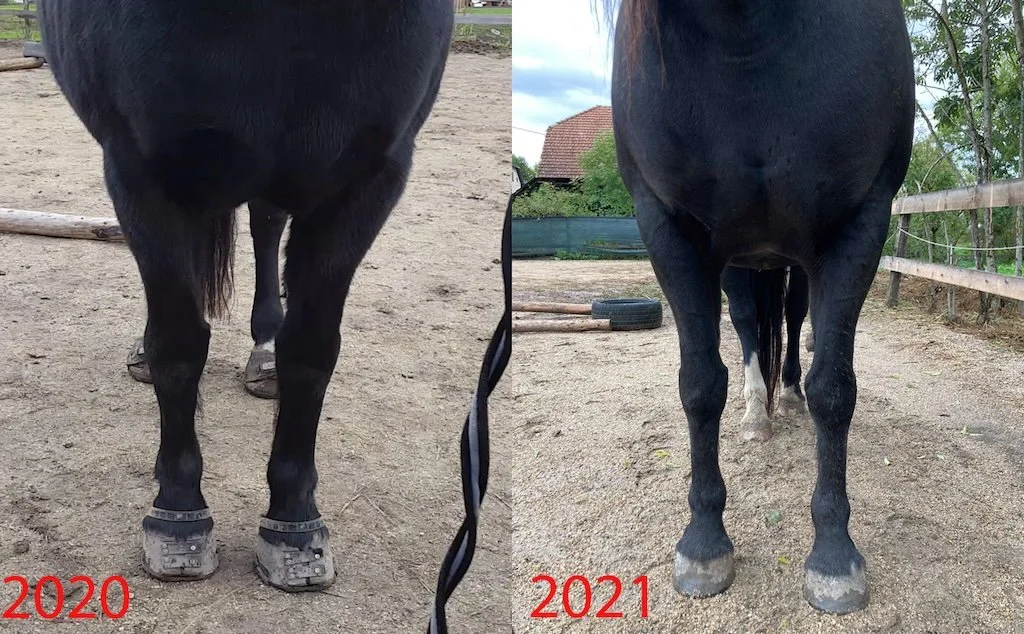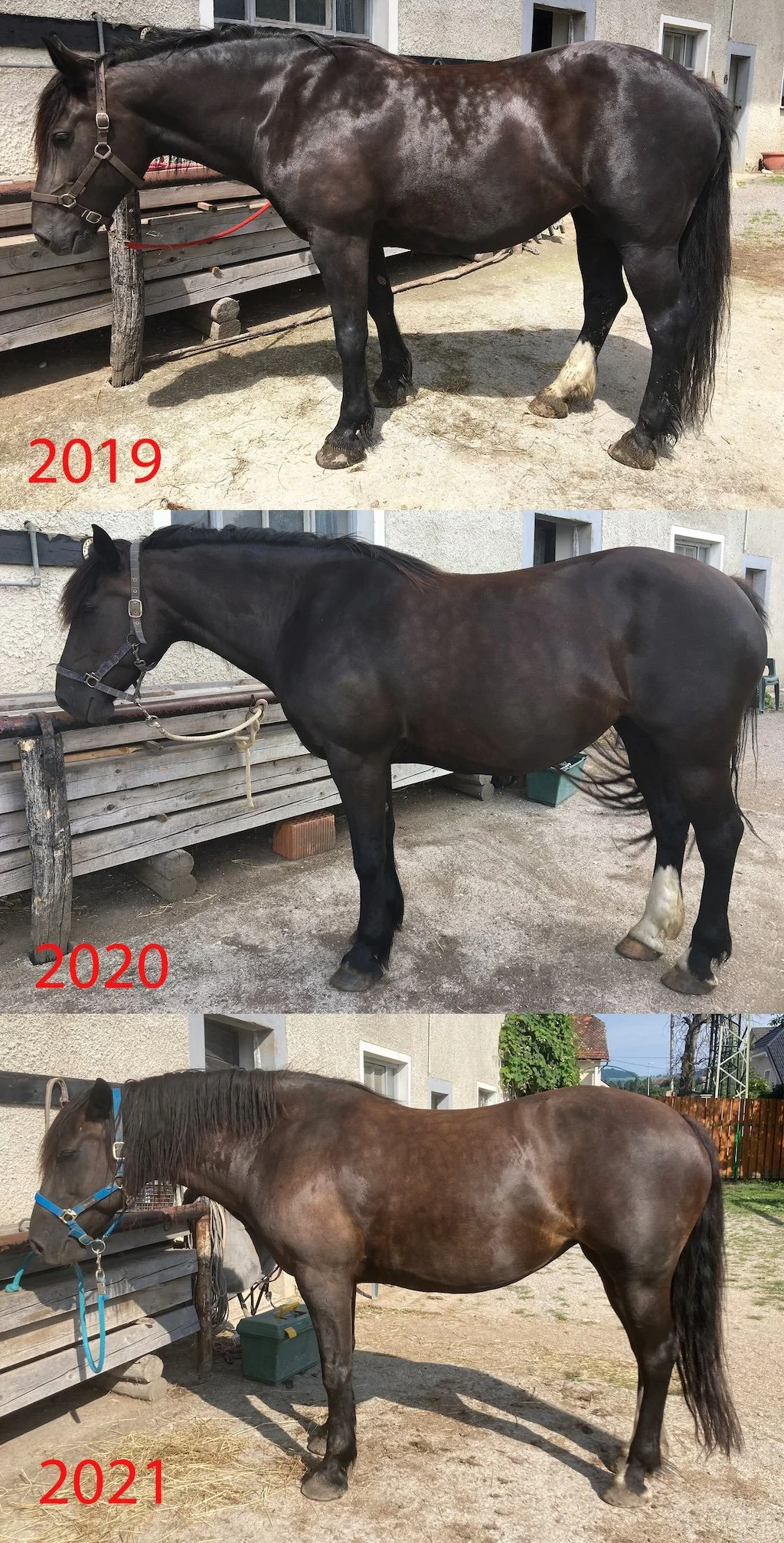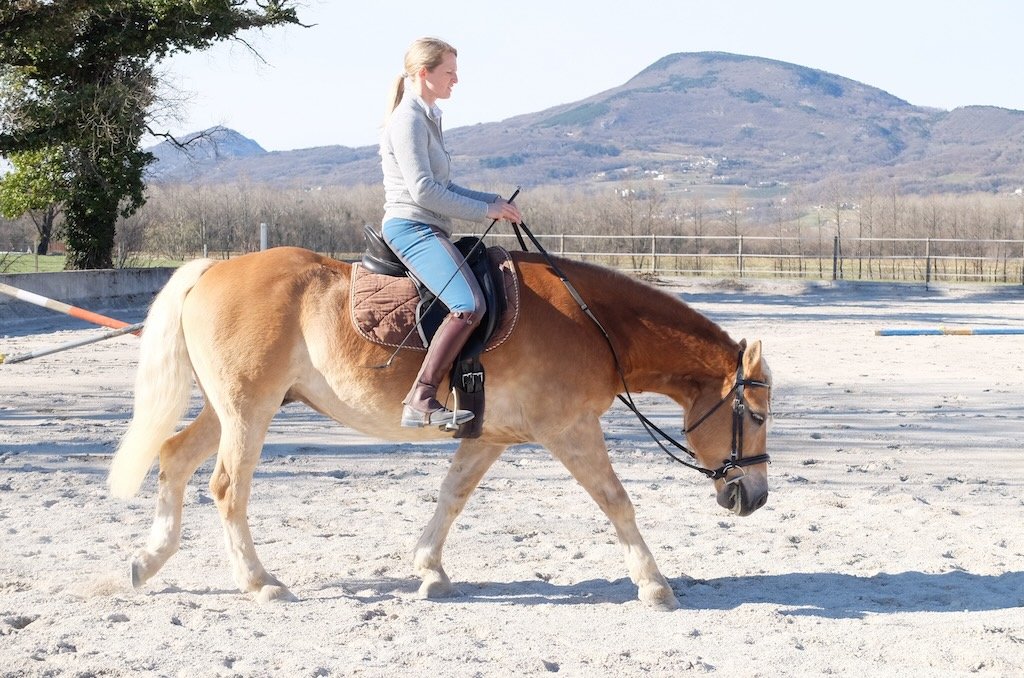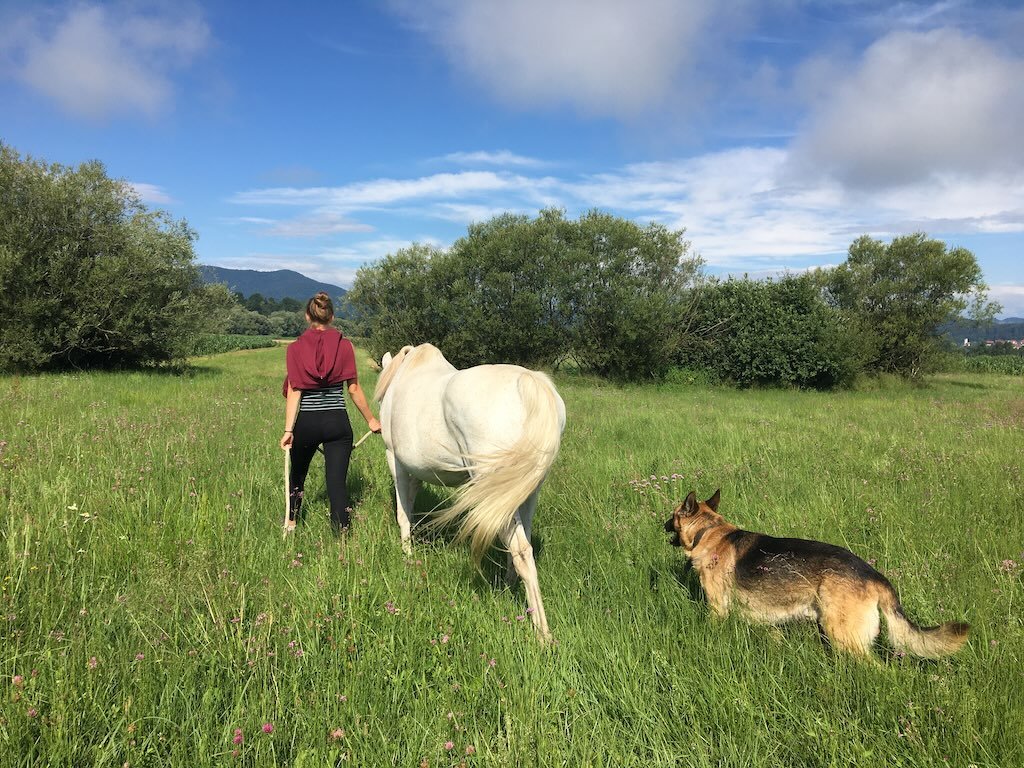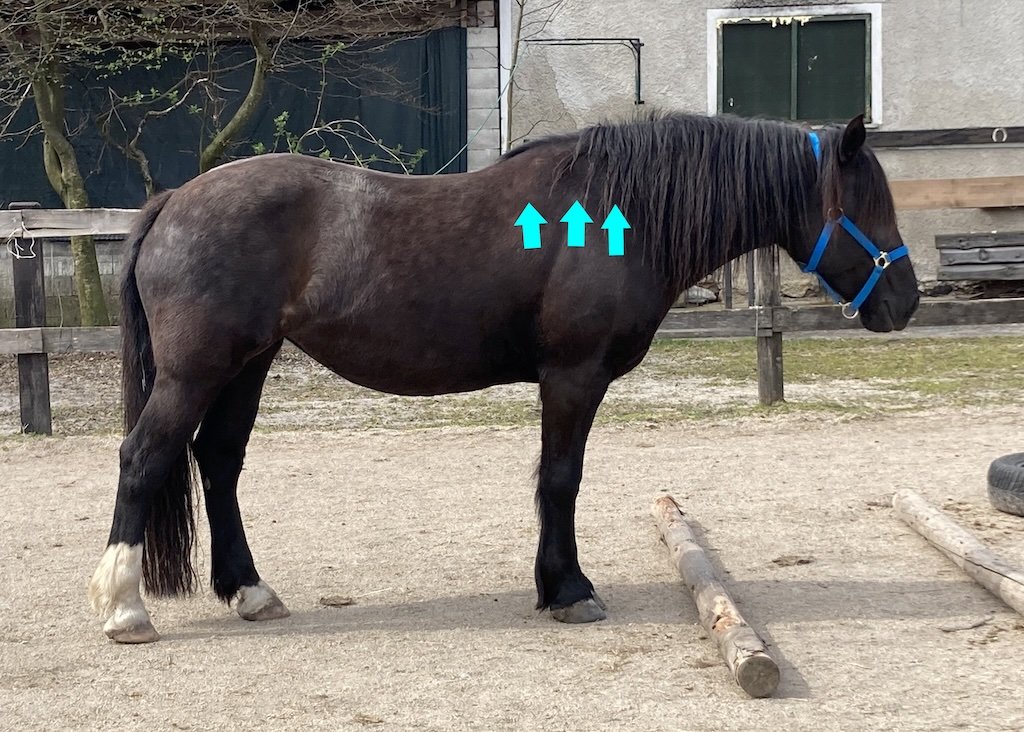Observing changes in the thoracic sling
As the horse’s training progresses, his thoracic sling will change. If the training is sound, the thoracic sling should become more functional and stronger. Here is what to look out for.
Observing the changes in your horse
Noticing changes can be tricky. The changes that occur with training are subtle and if we see our horse every day it can be hard to detect them. Here is how to notice change over time.
How does your horse rest?
How the horse chooses to use his body while resting can tell us a lot about issues he might be having. Pay attention to how your horse stands when he is relaxed.
The transition to barefoot – from a bodyworker's point of view
Taking care of the myofascial system during the transition from shod to barefoot is crucial for long term success.
Strengthening the thoracic sling on the go
Here are a few ideas on how to strengthen the thoracic sling in a very casual, non-complicated way.
Reading the head position
How the horse chooses to carry his head can tell us a lot about what is going on in his body. Here’s a few tips on reading head position.
Downhill conformation ... or downhill posture?
A downhill conformation is an undesired trait, one that is very often exacerbated by a weak thoracic sling.
Releasing the key areas
Three important junctions in the horse’s spine are key to healthy back mobility. Here are some gentle techniques to help release any tension in these areas.
Why running with horses can be awesome
Going for a run with your horse can be very beneficial, but we do need to go about it in a cautious way, as it can be dangerous.
Assessing the pectoral muscles
The pectoral muscles can become tight with thoracic sling dysfunction, lower limb injury or hoof imbalances. Here are a few ways to check if your horse’s pecs are in trouble.
The pecs – more important than you think
The pectorals are an important group of muscles that we tend to overlook. Understanding a bit about how to recognise dysfunction in this area can help us make better training decisions.
What can the braciocephalicus tell us?
The brachiocephalicus can tell us a lot about what is going on in the horse’s front end, so it pays to be able to observe and palpate it.
Back to school challenge
If you are bringing your horse back to work after a lazy summer, make sure to make a plan first – this will make progress faster and healthier.
Good posture on the trail
Groundwork should not be reserved for the arena only. You can do some wonderful groundwork and set up a good foundation for healthy posture on the trail too.
A closer look at postural changes
Training your eye to spot good posture can be tricky. Here is a closer look at some things to be watching out for.
Thoracic sling – a lesson in anatomy
Understanding the anatomy of the thoracic sling is essential in our ability to make good decisions when it comes to training our horses.
Stress and the thoracic sling
Stress is bad for so many things, including locomotive problems. A stressed horse will be more likely to overextend the base of his neck, causing many issues.
When addressing the body, address the feet too!
The feet impact the body and the body impacts the feet. When dealing with dysfunction, it is crucial to address both.
The neutral spine and range of movement
A neutral spine enables the horse to move with ease and suppleness and allows him to use his body in an energy efficient way.
Why we need to be very, very careful with horses' necks
The neck of the modern horse is a sensitive structure that can be damaged by improper riding. We need to be very careful not to create dysfunction in the neck.
